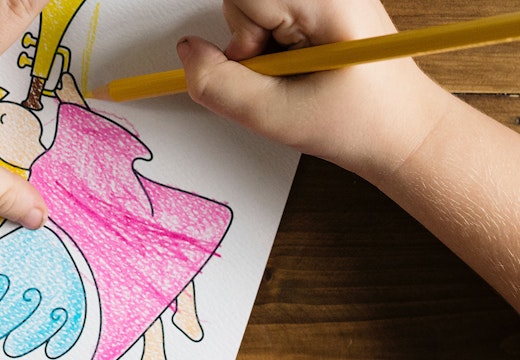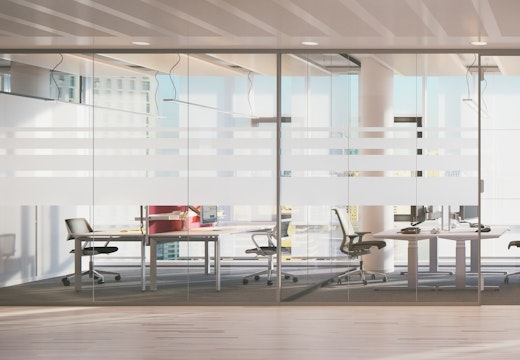The evolution of workplace behaviours, attitudes and technology
Condeco outlines a decade-by-decade timeline of the evolution of the workplace to understand how attitudes and behaviours have progressed and technology has emerged over the years
The workplace has evolved considerably since the 1950s, both physically and socially. Not only do women now hold prominent leadership positions in organisations, but also mental health, diversity and inclusion policies are at the forefront of the business agenda. Physically workplaces have become flexible and agile to accommodate all employees and different styles of work.
Condeco created a timeline from 1950 to demonstrate just how much has changed in the workplace over the past 70 years. Charlotte Bradley, Condeco’s UK account manager, shares some thoughts on workplace progression and her experiences along the way.
The 1950s
In the 1950s women typically did not hold technical positions in the workplace. They usually held secretarial positions until they got married and became a housewife. Research shows that the 1950s workforce worked longer hours and took less holidays, yet the 2018 workforce has higher stress levels with 48 per cent of people saying their stress levels have increased over the past five years.
Charlotte says: ‘As a workforce, we have so many more paths of communication from email, Skype, mobile devices and social media. Over one billion emails are sent and received every day in 2018 – we need to take mini digital breaks. Take that time to work on personal development or action plans.’
The 1960s
The 1960s saw an influx of immigrants as the UK Government encouraged people to ‘Help Rebuild Britain’. Racism was common, and it was a difficult time for minority groups. Smoking in the office was the norm, as well as employers asking women to leave their jobs when they were married. However, the 1960s also saw government passing new laws giving women the right to equal pay and making it illegal to discriminate against women based on gender. Research shows that today, racially diverse teams outperform non-diverse teams by 35 per cent, and teams where women and men are equal produce 41 per cent more revenue.
Charlotte says: ‘I’m lucky enough to work with a hugely diverse group of individuals from different ethnic minorities, backgrounds, religions and cultures. Gender balance is important and having a diverse workforce makes us more creative and more in tune with our customers. It gives us the ability to better problem-solve by drawing on more diverse talent. A diverse team brings balance and helps bridge the path between departments, teams, suppliers and customers.’
The 1970s
In 1971, the number of women in work reached 57 per cent and there was a steady rise in employment. In 1975, Business Week published an article by the Head of Research at Xerox, George E Pake. He predicted ‘a revolution, over the next 20 years, involving a television display terminal sitting on my desk. I’ll be able to call up documents from my files on the screen, or by pressing a button. I can get my mail or any messages. I don’t know how much hard copy I’ll want in this world. It’ll change our daily life, and this could be scary’.
Charlotte says: ‘It’s essential for the end product to be designed with the user in mind. The user experience should always be at the forefront of our minds, creating a journey which provides meaningful and relevant experiences; the product should be able to help, guide and assist.’
The 1980s
The mobile phone was first launched into the market in 1985. It revolutionised the use of technology in the workplace. Technology gathered speed and paved the way for the revolution of tech use in office space. Research predicted that by 2018 there would be an estimated total of 2.53 billion smartphones users in the world.
Charlotte says: ‘The mobile phone has been an amazing asset to the workplace, allowing you to keep up to date within your working environment. But we are currently spending up to two hours on our smartphone each day, double the amount of time we spend on our PCs and laptops. In the workplace a mobile phone can also be a huge distraction rather than a workplace tool.’
The 1990s
Beige was the signature colour of workplace design. High cubicles were erected and large desktop computers, printers and fax machines were distributed throughout the office. We began hearing about a hip new start-up known as ‘Google’. Today research tells us that employees who have control over the design and layout of their workspace are not only happier and healthier – they’re also up to 32 per cent more productive.
Charlotte says: ‘The design and layout of the office has a huge effect in your workforce’s productivity, even simply adding colour in the workplace has an effect. According to British colour psychologist Dr David Lewis, 80 per cent of UK office workers believe colour can affect their mood. I enjoy artwork and find it inspiring to have in the workplace, especially when it’s from local artists.’
The 2000s
This was a decade of growth for technology and new ways of working; the 2000s began setting the scene for agile, flexible and activity-based working. More and more employees had laptops and mobile phones, working remotely became much more feasible.
Charlotte says: ‘Did you know the average person spends 90,000 hours of their lifetime in work? Creating a flexible and agile environment can increase productivity and wellbeing within your workforce; flexible working can also reduce the amount of time your workforce spends commuting.
2010 and beyond
Huge strides have been made in workplace design and attitudes, but there are still issues that need to be resolved, such as the gender pay gap. But we have reached a point where America voted in its first black president (for two terms), New Zealand’s current prime minister is pregnant, and agile and flexible working are now commonplace.
Charlotte says: ‘The future is exciting, and we will see more advanced technology impact our lives in a positive way, with Artificial Intelligence in the workplace becoming personalised. Individuals will be able to choose the amount of personal data they share with their employer, which in turn will allow for each individual worker to have specifications for their own working environment, feature walls in meeting rooms, smart allocation of hot desking and augmented reality when using video integrated meetings. The workplace will become a more fun and engaging place to be, with fewer desks and more collaborating between team members.’








